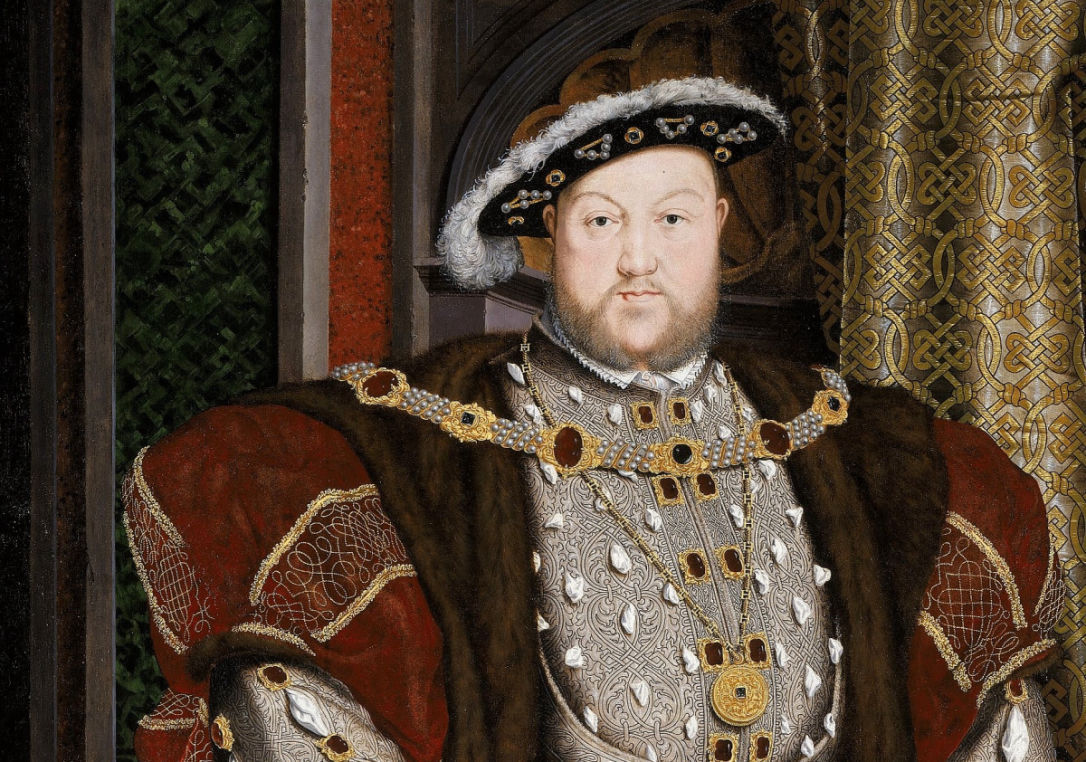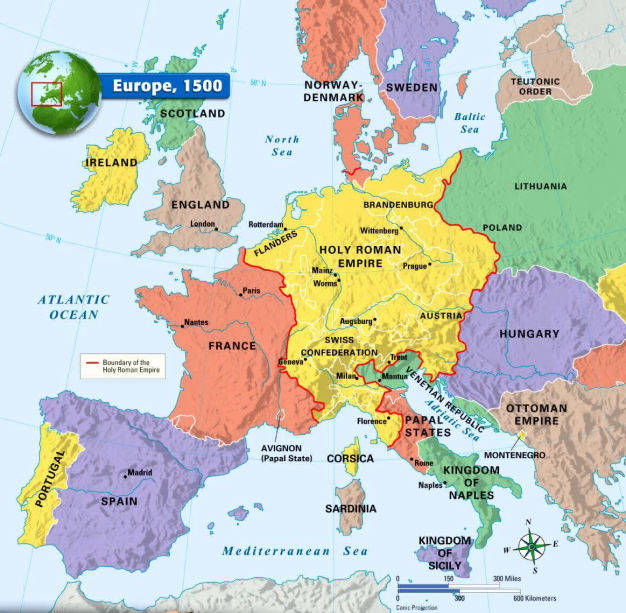



Henry VIII II
The First French War
We’ll look now at the first French war of Henry
VIII.
It lasted from 1511 to 1514, four long
years.
Henry joined what was called the ‘Holy League’
in 1511; this was a group of countries who were
set against France, in order to take the land of
France and divide it up amongst them.
In 1512, Henry and the League declared war on
France, and agreed that his part would be to
attack the south west of France with King
Ferdinand of Aragon (now part of Spain).
But, Henry was what we call naïve.
Does anyone know an easy definition of
naïve?
It means that someone easily believes what
they are told, they rely on people being
honest and don’t try to think too much, if
someone promises something.
It was June 1512. Henry was naïve.
Ferdinand of Aragon (Picture 1) (Spain) betrayed him. This
means that Ferdinand attacked but kept a very
important city (called Navarre) for himself and
for Aragon.
When a city was taken by the enemy, the people
became part of the empire of the country that
took them over; and instead of paying taxes to
their real government or king, paid them to the
king who had invaded. And that made the
invading king even more wealthy.
Henry pretty much ignored that betrayal
although he was rather angry; in 1513 he decided
that on his own (well, with 25 000 soldiers) he
would attack the northern part of France.
This was much more successful, and Henry took
over two very large cities/areas called
Therounne and Tournai
(picture 2).
As I said - the victorious king also started
receiving income from the places he ‘won’ in
battles. And Henry needed the money so he could
continue making wars.
In the same year, there was quite an ordinary
battle which became important because Henry
captured some of the foreign nobility (the
high-up people). The battle is known as The
Battle of the Spurs.
Who knows what ‘spurs’ are?
They are the metal
spiked devices (picture 3) attached to the boots of
horse riders, used to make the horse go
faster or to stop the horse from hesitating
in battle.
If a horse was too scared, the rider could hurt
the horse by pushing the spikes on his boots
into the horse and obviously, the horse went
forward. Spurs were expensive, so only those
people with money could buy them - the
nobility.
Capturing the noble people was therefore known
as capturing the spurs - the
Battle of The Spurs (picture 4). This was an impressive thing
for Henry to do - and yes, he actually fought in
the battle.
Again, in those days the kings didn’t stand
back and watch from a safe place, they were
right there in the fighting, slashing, stabbing,
battering the other side’s soldiers.
In August 1514,
Maximilian of The Holy Roman
Empire (picture 5) and
Ferdinand of Aragon (Picture 1) agreed to make peace with France
and stop the war. Henry agreed with them, and he
also stopped fighting.
Henry kept the towns he had captured, the money
from them. The income and all the goodies too.
The Anglo-French Treaty recognised his claim to
the French throne (which means they also agreed
that Henry was the proper King of France) he
received money which had been owed to the French
king, and
he gave his sister to King Louis
XII
(picture 6). Louis was 34 years older than Mary
and didn't live long - apparently he was a bit
too energetic in the bedroom, and died 3 months
after the marriage.
He did what? He gave his sister to the French King. It was a normal sort of thing way back then, to give a sister or a daughter to a king who you had defeated, as something like compensation and also to make the bond between two countries much stronger. It’s not something we do these days.
So that was the end of the First French
War.
Who really won, do you think?
Well, all sides won and lost something.
Henry gained some important towns, but did
not become the French King; the French king
lost lands and income but gained a wife;
Ferdinand kept the towns he invaded and even
Maximilian gained land and money.
But while all this was going on, there was
trouble at home for Henry. At that time,
Scotland was a separate country from England,
and had it’s own king -
James IV (picture 7). Of course, Henry was aware
that countries would invade each other if they
could, and he knew that is he was away fighting
in Europe, there was a chance that James might
think about trying to invade England.
And that’s just what James did!
But intelligent Henry had made a plan for this
- he arranged for three lines of defence in
England - in the North, near Scotland, in the
midlands (the middle of the country) and in the
South of the country, just in case James went
that far south.
As it turns out, The Earl of Surrey’s soldiers (troops - same meaning) defeated (overcame or beat) James’s army in the North - at Flodden (picture 8). Not only that but James the King was killed too and so were many of his nobles.
A defeat as big as that, where a king is
killed, makes a country very weak, because they
no longer have a leader. So, while Henry was
away, his own nobles killed off the threat from
Scotland.